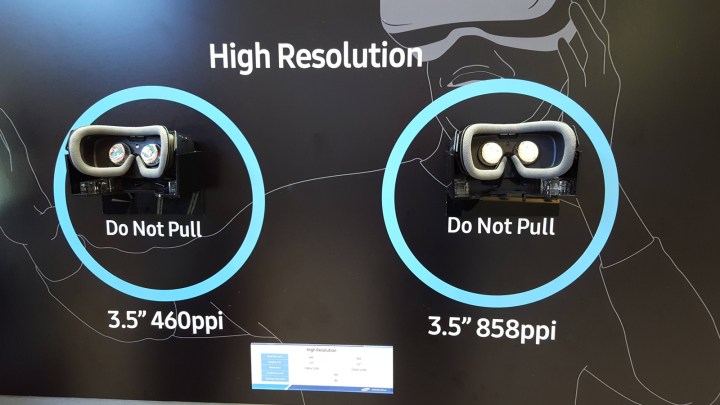
While one of the biggest developments between prerelease versions of the Oculus Rift headset and the HTC Vive was resolution improvements, since their debut, much more focus has been put on other features. People are excited for wireless connectivity, for inside out tracking and improved controller inputs. But resolution bumps can still make a big difference to the VR experience and Samsung’s new display developments will deliver just that.
The resolution of the consumer edition Rift and Vive headsets are 1080 x 1200 for each of the two 3.5-inch displays, giving a density of 460 pixels per inch (PPI). In comparison, the new display technology is 2024 x 2200 resolution with a density of 858PPI.

It supports the same 90Hz refresh rate as the original headset displays, so we shouldn’t expect any big boosts in average game framerate. That’s likely to be a blessing to developers however, as optimizing games for 90 frames per second is already quite a tall order.
To give the world some idea of what sort of tangible, real-world improvement we can expect from these sorts of displays, Redditor Krenzo snapped some images at Display Week 2017, through lenses mounted to the current-generation and next-generation displays. The difference is noticeable, with a significant reduction in the visibility of individual pixels and the gaps between them — the so-called screen-door effect.
This sort of improvement will not only bolster up close visuals, but should go a long way toward increasing the visibility of objects at a distance in virtual reality. One of the issues with current-generation headsets is that objects that are far away lack clarity when the screens are so close to the wearer’s face.
Text too should be much more readable in a variety of applications, which could go a long way to making virtual reality headsets a more viable alternative to traditional monitors for work as well as play.
Although the images do appear to show some improvement in color vibrancy and contrast, it’s possible that this was adjustments to the panel’s settings, rather than an intrinsic improvement in specifications. It would be wise to wait for Samsung to make a clear announcement on such improvements before making any assumptions there.
Editors' Recommendations
- How the Vive XR Elite can do high-end VR in a half-pound headset
- How to build a cheap VR-ready PC
- Oculus Rift vs. HTC Vive
- With new swappable faceplates, the Vive Cosmos is now a modular VR platform
- I fell out of love with VR, but the Vive Wireless rekindled the flame




